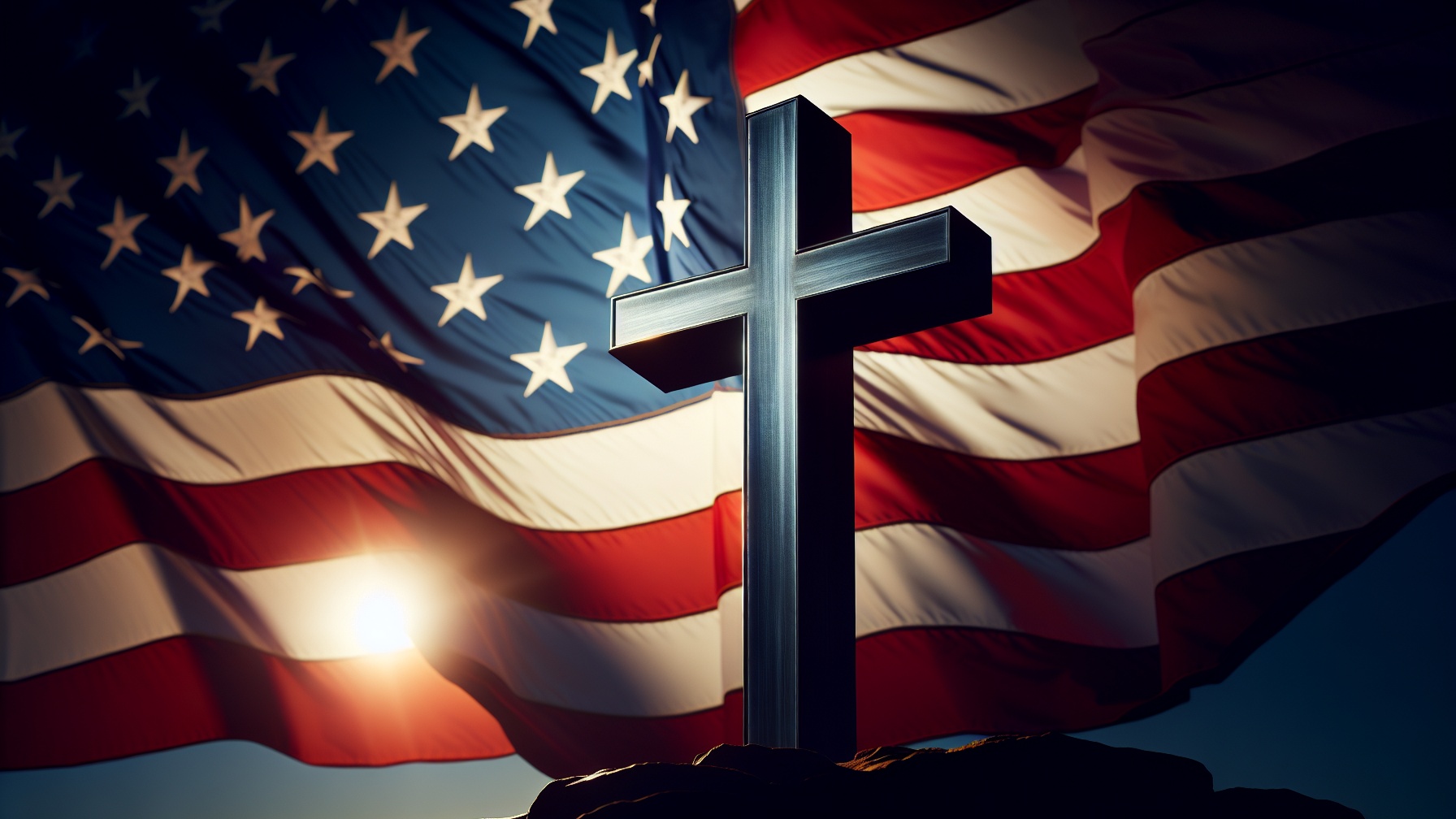In 2009, the economist Tyler Cowen began a TEDx Talk in open subversion of the format, telling the audience: “I was told to come here and tell you all stories, but what I’d like to do is instead tell you why I’m suspicious of stories. Why stories make me nervous. In fact, the more inspired a story makes me feel, very often, the more nervous I get.”
He’s right to be nervous. Stories have real power, a transformative power. Power that can be used for good or for ill. Their seductive power too often seems to exist independently of their truth or falsity.
Andrew Willard Jones, professor of history and political theory at the College of St. Joseph the Worker, opens his latest book, The Church Against the State: On Subsidiarity and Sovereignty, by explaining how it arose out of “an engagement with the statist, pro-sovereignty form of Catholic postliberalism that began in earnest after the election of Donald Trump in 2016.” The story this emergent Catholic postliberalism tells is that behind contemporary political and economic institutions of the modern West lies “an oligarchy hiding behind the fiction of the ‘private’ in order to profit from the destruction of the family and community.” This oligarchy can be defeated, and the future of family and community assured, by utilizing “the centralized, social-engineering, late-modern administrative state.” Moreover, “the solution to the tyranny of politically active economics is the reassertion of economically inactive politics, one that can regulate economic actors and keep them out of politics.”
Jones is highly sympathetic to the first part of this story, that our political and economic institutions have been captured by an anti-family/community oligarchy. He is critical, however, of the political program of the statist postliberals because it depends on a notion of sovereignty that “is at once a bad idea and an impossible idea—a bit of sophistry that fails to describe what is really going on in any and all political relationships, past or present.”
This notion of sovereignty is a reductionistic statist one: “The State is the entity that decides when and how force can be used; there is no power beyond it among men and ultimately conflicts terminate with its decision followed by its action. States are sovereign.” Jones argues that liberalism and various forms of authoritarianism are each versions “of the modern attempt to build sovereign regimes … within a shared understanding of power: within a shared anthropology, a shared cosmology, and ultimately, a shared theology—all of which are wrong.” Statist, pro-sovereignty postliberals are thus “postliberal” in only a superficial sense and share the same philosophical foundation that animates liberalism.
True postliberalism, according to Jones, in not built on a foundation of sovereignty but rather subsidiarity: “Subsidiarity is no mere axiom or principle of governance; it is an alternative, integral social form with deep roots in the premodern Western tradition.” Subsidiarity is informed by the organic and dynamic nature of the common good as explained in the Compendium of the Social Doctrine of the Church, which Jones cites: “The common good does not consist in the simple sum of the particular goods of each subject of a social entity. Belonging to everyone and to each person, it is and remains ‘common’ because it is indivisible and because only together is it possible to attain it.”
If you have had difficulty following along to this point, The Church Against the State is not for you. This summary of the book’s overarching theme and exploration of some of its basic arguments are drawn from its first three chapters. Terms like sovereignty and subsidiarity are used well in advance and repeatedly before they are defined. Readers without background knowledge in Catholic Social Teaching, philosophy, political theory, the American conservative movement, and European history will quickly find themselves up a creek without a paddle.
It’s also not a book for an academic audience. Jones notes that The Church Against the State is constructed from materials “written in a variety of contexts” and “are sometimes repetitive and lack fully consistent terminology.” While citations to primary sources are abundant and often illuminating and well chosen, secondary literature is rarely cited. Jones touches on numerous, highly contested issues in academic scholarship, ranging from the nature and origins of liberalism, capitalism, and American conservatism to the concepts of sovereignty and subsidiarity, without presenting the reader with the state of that scholarship. It is thus difficult for nonspecialists to determine how controversial, contested, original, or innovative Jones’s arguments are.
This begins to cause problems if the reader approaches the book with a critical spirit. When Jones argues, for instance, that liberalism and authoritarianism process “a shared understanding of power: within a shared anthropology, a shared cosmology, and ultimately, a shared theology,” he does so largely based on his readings of the English philosopher Thomas Hobbes’s and the Nazi jurist Carl Schmitt’s conceptions of sovereignty being essentially the same. So far, so good. But are Hobbes and Schmitt’s “sovereignty” representative of conceptions of sovereignty in liberalism and authoritarianism writ large? I have my doubts, at least in the case of liberalism. This story makes me nervous.
First off, Hobbes’s status in the liberal tradition is contested. The weight of the academic consensus amounts to splitting the difference, settling on the uneasy label “proto-liberal.” This means that, while Hobbes made conceptual innovations to political theory that were later employed and developed by figures in the liberal tradition, there are authoritarian strains in his thinking at odds with liberalism.
While this doesn’t necessarily invalidate Jones’s argument, it does complicate it. While there is a sustained examination of the proto-liberal Hobbes’s doctrine of sovereignty, Jones asserts rather than argues that later figures in the liberal tradition rely upon it. The English philosopher John Locke, the Austrian economists Ludwig von Mises and Frederick Hayek, and the American philosopher John Rawls are mentioned and sometimes quoted but receive no serious, sustained engagement.
Particularly curious is the fact that, though Hayek is mentioned several times throughout the book, only his The Road to Serfdom is cited, a book written for a popular audience to address contemporary political and economic debates as the Second World War was coming to an end. Hayek’s later academic works on law and political theory, The Constitution of Liberty (1960) and Law, Legislation, and Liberty (1973–79), are not considered at all.
This was disappointing, as Hayek’s intellectual contributions, such as spontaneous order, dispersed knowledge, and his critique of scientism, all resonate with the Church’s teachings on subsidiarity and the common good—which Jones forcefully defends. Hayek himself was also an observant critic of certain strands of the liberal tradition.
For example, in his essay “Individualism: True and False,” Hayek contrasts two strands of liberalism, one congenial to human flourishing and the other an obstacle to it. False liberalism arises primarily for liberal thinkers on the European continent, and is rationalistic, atomistic, contemptuous of traditions and institutions, and ultimately hostile to human freedom. True liberalism is organic, social, deferential to traditions and institutions, and secures freedom necessary for all to contribute to the common good. It is precisely the sort of distinction that Jones himself makes in distinguishing the false statist, pro-sovereignty postliberals from the true postliberals, who embrace subsidiarity and the common good as their lodestars.
John C. Pinheiro has argued convincingly that Pope Leo XIII sought to make similar distinctions in addressing liberalism. The Council Fathers at Vatican II likewise exhibited a keen discernment, particularly in Dignitatis Humanae, when addressing religious freedom and rights of conscience. Pope St. John Paul II in Centesimus Annus does the same with economic liberalism (“capitalism”). When one fails to discriminate, as Jones does in his chapter “Socialism and Capitalism,” it is easy to read Pope Pius XI’s encyclical Quadragesimo Anno as a straightforward denunciation of liberalism. But then how does one explain the self-styled liberal economist Wilhelm Röpke’s deep appreciation for it?
Röpke’s own explanation involved making careful distinctions as he writes at the conclusion of his essay “Liberalism and Christianity”:
Perhaps the average Catholic may balk at speaking in terms of a “liberal” world economy. It is not easy to abstract what is essential from the association of nineteenth-century ideas implied by the word “liberal”; there is an understandable hesitation to employ this word in its general meaning—that meaning which, nevertheless, expresses so well a social philosophy specifically Catholic.
In the last analysis, it may be answered that words count for little. What matters is that we recognize our entry into the decisive phase of the battle for freedom and the dignity of man; and, or in this battle, the patrimony of Christian social philosophy which, increasingly, merges with all that is essential and enduring in liberalism.
Tyler Cowen told the TedX audience that “the best stories are often the trickiest ones. The good and bad things about stories is that they are a kind of filter. They take a lot of information, and they leave some of it out, and they keep some of it in.” There’s a lot of value in The Church Against the State, particularly in its positive account of Catholic Social Teaching, but only if readers keep Cowen’s proviso in mind.

